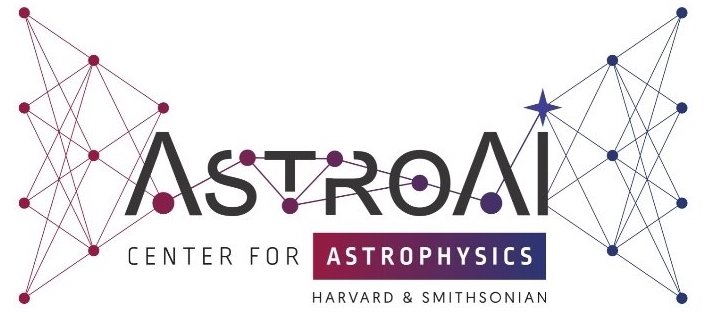AstroAI Lunch Talks - December 16, 2024 - Marko Ristic & Valentina La Torre
02 Dec 2024 - Joshua Wing
The video can be found here: https://www.youtube.com/watch?v=fZVMhEzmHh0
Speaker 1: Marko Ristic
Title: Leveraging Machine Learning to Enable Bayesian Inference of Kilonovae using Detailed Models
Abstract: The detection of the transient electromagnetic counterpart AT2017gfo associated with binary neutron star merger GW170817 heralded a new era of multimessenger astronomy. Initial work characterizing the behavior of this transient, or kilonova, utilized simplified models which could easily explore a broad parameter range at minimal computational cost. Since then, as detailed models incorporated more sophisticated microphysics, it has become clear that simplified and detailed models are not in agreement regarding salient features in kilonova light curves and spectra. However, detailed models are notoriously expensive for Bayesian inference applications, leading to a trade-off between detailed microphysics and computational budget. In this talk, I will discuss how machine learning tools can enable intelligent simulation placement for generating detailed simulation libraries. These libraries in turn serve as training sets for high-fidelity surrogate models which capture the salient features in radiative transfer light curves and spectra at a fraction of the computational cost. Finally, I will discuss how these surrogate models enable us to further constrain inferred kilonova parameters using multiple observational channels.
Speaker 2: Valentina La Torre
Title: SOMewhere in the Universe: Self-Organizing Maps for Galaxies and Black Holes
Abstract: The next generation of galaxy surveys, such as Euclid and LSST, will generate immense data volumes, requiring advanced machine learning (ML) techniques to optimize their scientific return. In this talk, I will demonstrate the power of Self-Organizing Maps (SOMs), an unsupervised ML method, for analyzing complex datasets through intuitive visualization and efficient parameter estimation. I will discuss how SOMs were validated with cosmological simulations for galaxy parameter estimation, addressing realistic challenges like photometric uncertainties and missing data. I will also present ongoing work on applying SOMs and SED fitting to the Subaru Hyper-Suprime Cam survey, which includes millions of galaxies and serves as a testbed for methods for future large surveys. Finally, I will introduce HOLESOM, a SOM-based tool I developed to identify and characterize slowly accreting intermediate-mass black holes (IMBHs)—an underexplored population—and share analytical equations derived with symbolic regression to better link observables to physical parameters. I will conclude with future plans to contribute to our understanding of galaxy and black hole evolution.
